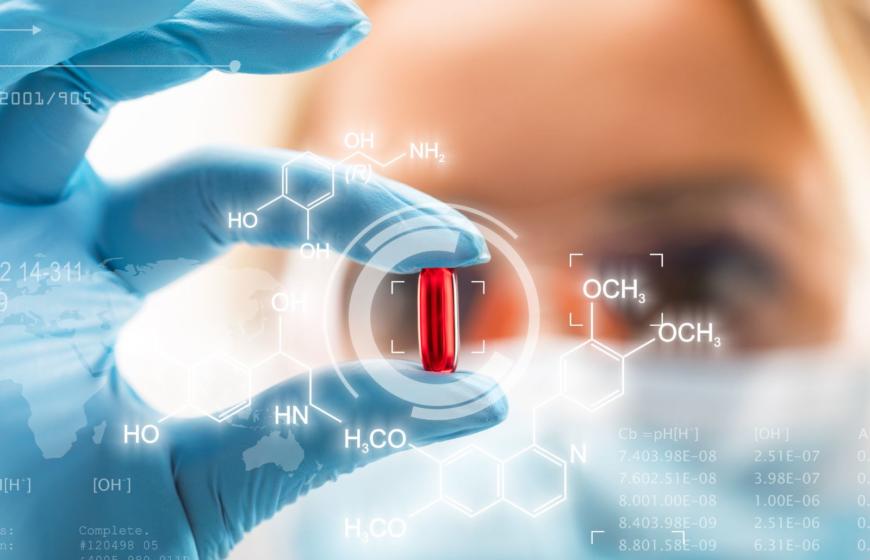Industrial gases
Pharmaceutical packaging with inert nitrogen gas
Many medicines are packed in so-called blister packs where each tablet is individually enclosed between a plastic case and foil. This packaging is filled with pharmaceutical grade nitrogen, which is an inert gas. With such packaging air is not in contact with the medicine, so oxidation of the medicine is therefore prevented.
Oxygen for fermentation broths
Biotechnology plays a critical role in the production of modern medicines. Large fermentation tanks are used for commercial scale production of pharmaceuticals. With a desire to do more with less, it is becoming increasingly common to intensify the bioreactor process with the use of oxygen-enriched air to feed the aerobic fermentation processes. Liquid oxygen can be supplied for this purpose and the use of vapourisers between the liquid tank and the bioreactor ensure that the oxygen arrives into the fermentation broth at a suitable temperature.
Solvent recovery with liquid nitrogen cryogenics
Many solvents are used in biotechnology. For example the selective separation of various organic chemicals from a fermentation broth might rely on solvent extraction processes. These solvents are often volatile organic compounds which evaporate when in use. Recovery of the solvents can be achieved with extreme effectiveness using cryogenic processes where the cooling energy is supplied by liquid nitrogen. Solvent condensation in this way results in less wastage of expensive processing agents and also reduces potentially harmful emissions to the ambient air which could be a nuisance odour to local housing, harmful to employees or damaging to the environment.
Specialty gases
Drug discovery
The invention of new pharmaceutical drugs is a time-consuming process involving the screening of millions of molecules to arrive at one or two chemicals that may have the desired therapeutic effect. These chemicals may then enter production and clinical trials with patients in hospitals. The initial phase of drug discovery work takes place outside of the hospital in research centres packed with the latest analytical instrumentation. A common device used in pharmaceutical research is the nuclear magnetic resonance spectrometer (NMR) which requires liquid helium to activate its superconducting magnet that is the source of the energy field used to form spectral images of the compounds to be analysed.
Gas chromatography is extensively applied in drug discovery. The chromatography gas may be helium, hydrogen, argon or nitrogen. Detector gases are also often required, such as helium if a discharge ionisation detector, or DID, is in use. Alternatively P5 or P10 gas mixtures are used as the make up gas for electron capture detector (ECD) applications. Hydrogen and instrument grade synthetic air are both required if a flame ionisation detector (FID) is employed. High pressure liquid chromatography (HPLC) is also a workhorse in many biotechnology applications. This technique uses fewer specialty gases than its cousin gas chromatography, but some specialty gases are used for solvent degassing and sample preparation. Supercritical fluid chromatography (SFC) is also employed in the pharmaceutical sector. SFC relies on carbon dioxide to transport the mobile phase through the chromatography column.
Quality control
Extensive quality control checks are made throughout the pharmaceutical manufacturing process to ensure that the pharmaceutical production process is generating the required medicines. They are also critical to check that active pharmaceutical ingredients which might be purchased from suppliers are satisfactory. Similar to drug discovery and the detection of fraudulent medicines, this QC process requires a range of instrumentation gases to feed the necessary analytical equipment.
Detection of fraudulently produced medicines
It is unfortunate that some medications are produced under uncontrolled conditions by rogue operations. These chemicals are then offered on the market as pharmaceutical products and are sometimes presented in similar packaging to the real product. Detection of these fraudulent products is essential for public health purposes to ensure that only high quality medicines enter the supply chain. Elimination of such operations is also important to ensure that the investment in patented research by genuine pharmaceutical companies is not undermined by fake substitutes. To detect these fake products, it is necessary to use sophisticated laboratory instrumentation such as HPLC, GC-MS equipment or NMR devices. These rely on a range of specialty gases such as high purity nitrogen or helium for their operation.
